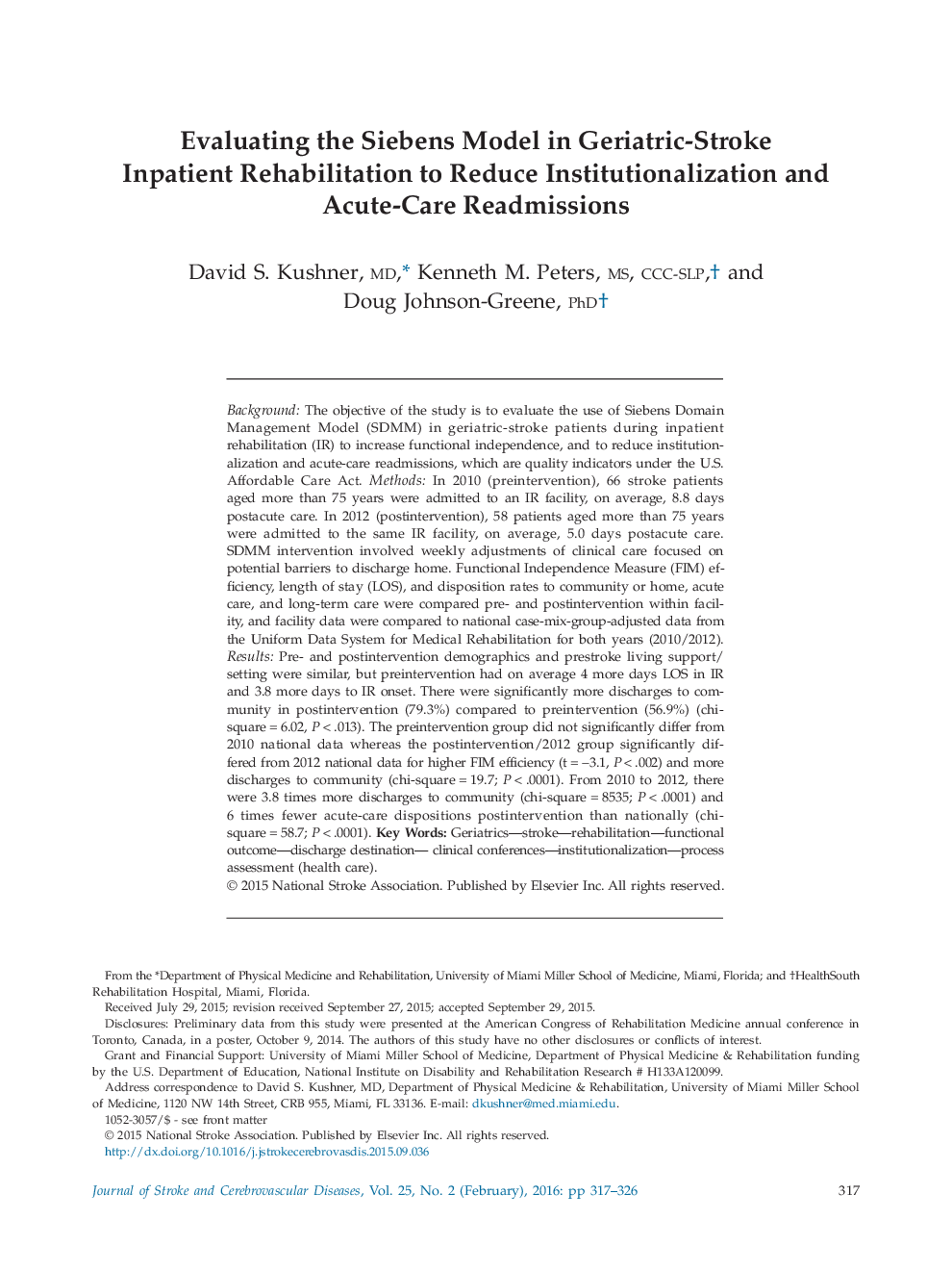| کد مقاله | کد نشریه | سال انتشار | مقاله انگلیسی | نسخه تمام متن |
|---|---|---|---|---|
| 5873033 | 1144466 | 2016 | 10 صفحه PDF | دانلود رایگان |
BackgroundThe objective of the study is to evaluate the use of Siebens Domain Management Model (SDMM) in geriatric-stroke patients during inpatient rehabilitation (IR) to increase functional independence, and to reduce institutionalization and acute-care readmissions, which are quality indicators under the U.S. Affordable Care Act.MethodsIn 2010 (preintervention), 66 stroke patients aged more than 75 years were admitted to an IR facility, on average, 8.8 days postacute care. In 2012 (postintervention), 58 patients aged more than 75 years were admitted to the same IR facility, on average, 5.0 days postacute care. SDMM intervention involved weekly adjustments of clinical care focused on potential barriers to discharge home. Functional Independence Measure (FIM) efficiency, length of stay (LOS), and disposition rates to community or home, acute care, and long-term care were compared pre- and postintervention within facility, and facility data were compared to national case-mix-group-adjusted data from the Uniform Data System for Medical Rehabilitation for both years (2010/2012).ResultsPre- and postintervention demographics and prestroke living support/setting were similar, but preintervention had on average 4 more days LOS in IR and 3.8 more days to IR onset. There were significantly more discharges to community in postintervention (79.3%) compared to preintervention (56.9%) (chi-squareâ=â6.02, Pâ<â.013). The preintervention group did not significantly differ from 2010 national data whereas the postintervention/2012 group significantly differed from 2012 national data for higher FIM efficiency (tâ=ââ3.1, Pâ<â.002) and more discharges to community (chi-squareâ=â19.7; Pâ<â.0001). From 2010 to 2012, there were 3.8 times more discharges to community (chi-squareâ=â8535; Pâ<â.0001) and 6 times fewer acute-care dispositions postintervention than nationally (chi-squareâ=â58.7; Pâ<â.0001).
Journal: Journal of Stroke and Cerebrovascular Diseases - Volume 25, Issue 2, February 2016, Pages 317-326
